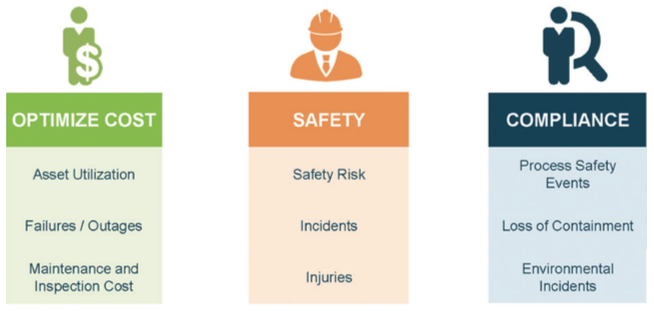An Inspection Data Management System (IDMS) is a software program or system designed to collect, store, organize, and analyze data generated from equipment inspections and testing in industrial facilities. The dataset within an IDMS includes crucial information about asset conditions, performance records, maintenance history, as well as detailed inspection reports, test results, and interconnected data. The primary purpose of an IDMS is to streamline and consolidate all relevant information related to a facility's equipment inspection processes.
An IDMS is widely used by operators of asset-intensive plants in various industries such as oil and gas, chemicals, power generation, pharmaceuticals, and manufacturing. By incorporating IDMS systems into their operations, organizations can significantly enhance the efficiency and effectiveness of their asset management processes.
IDMS Applications and Benefits
- Maintenance Planning and Scheduling: IDMS provides operators with a comprehensive overview of asset conditions, enabling them to proactively schedule maintenance and repair activities. This approach can minimize downtime and extend the lifespan of assets.
- Risk Management and Mitigation: IDMS helps identify and prioritize inspections for assets posing significant risks to operations. This allows for the allocation of resources and prioritization of maintenance tasks to address safety hazards and prevent asset deterioration or equipment failure through preventive maintenance measures.
- Compliance and Regulatory Reporting: IDMS facilitates automated report generation and meticulous documentation in accordance with major regulatory standards like API, ASME, OSHA, and ISO. Compliance with these standards demonstrates preparedness for regulatory audits.
- Performance Analysis: IDMS offers valuable insights into asset performance, allowing operators to optimize maintenance strategies and identify opportunities for system improvements.
- Improved Efficiency: IDMS software centralizes all data inputs into a single database, streamlining maintenance processes, reducing downtime, and boosting productivity. This ensures that all relevant departments have access to the same accurate information, facilitating quick access to actionable insights and informed decision-making.
- Cost Savings: With IDMS, operators can identify potential issues promptly and schedule proactive maintenance activities, avoiding costly repairs and replacements. Additionally, smarter inspection planning leads to a reduction in unnecessary asset examinations, resulting in overall maintenance cost savings.
Relevant Links
Topic Tools
Share this Topic
Contribute to Definition
We welcome updates to this Integripedia definition from the Inspectioneering community. Click the link below to submit any recommended changes for Inspectioneering's team of editors to review.
Contribute to Definition














































































